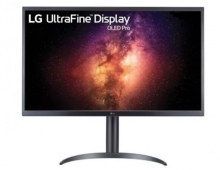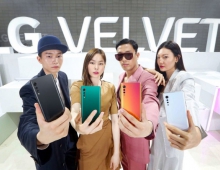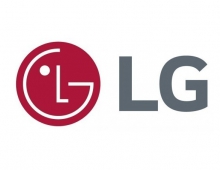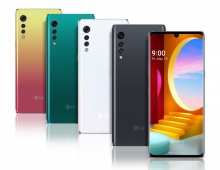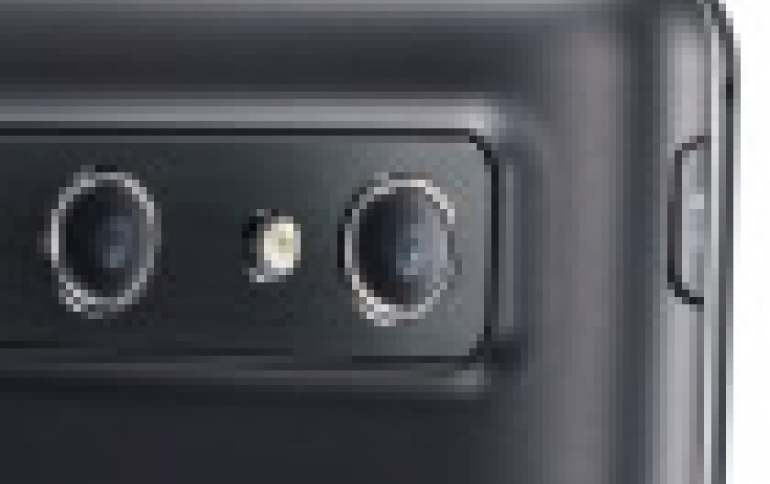
LG To Unveils 3D Game Converter For Smartphones at IFA
At IFA 2011 in Berlin next week, LG Electronics will demonstrate the world?s first OpenGL-based 2D to 3D game conversion engine available on a smartphone platform.
LG's 3D Game Converter will be included in the first Maintenance Release (MR) of the LG Optimus 3D smartphone starting this October, and the the exact rollout date will be determined by each mobile carrier, LG said.
The 3D Game Converter is expected to benefit both game developers and smartphone users alike. Small and medium-sized game companies will be able to offer 3D versions of their existing 2D games without major investments in human resources, cost or time. Meanwhile, smartphone users will reap the benefits of being able to convert their 2D games into 3D free of charge.
"Our Game Converter is a major breakthrough for this industry," said Dr. Jong-seok Park, President and CEO of LG Electronics Mobile Communications Company. "Mobile gaming is a huge trend on the cusp of massive growth and LG is determined to be the de facto leader in this space."

Once the 3D Game Converter is installed, users can enjoy 3D on previously purchased 2D games(OpenGL-based and landscape mode only.) simply by activating the 3D Game Converter. Games can be switched back to 2D just as easily.
When a user opens a 2D mobile game through the 3D Game Converter, the program automatically scans the game to see if it is listed among the 2D mobile games optimized for 3D conversion. If the game has been optimized, it will be converted into 3D using default visual settings. Unlisted OpenGL-based 2D games can still be converted to 3D by adjusting the settings manually. Optimized settings for approximately 50 2D games will be available by October, with 50 more to be added by year?s end.
"Far from being a gimmick, LG's 3D Game Converter automatically recognizes the depth information based on the location of each object and separates the 2D graphic images for each eye," explained Dr. Henry Nho, LG's 3D Technology Evangelist. "Using the existing depth information, the 3D Game Converter generates two different images -- one for the foreground and one for the background. It then uses a thin film called Parallax Barrier on the display to show the left image to the left eye and the right image to the right eye, creating an illusion of visual depth."
LG has filed several patent licenses in major countries such as the U.K., Germany and the U.S. for technologies embedded in the 2D-3D game conversion feature.
Visitors attending IFA 2011 can experience LG Optimus 3D up close in Hall 11.2 of Messe Berlin.
3D content shot by LG Optimus 3D
LG is also collaborating with National Geographic Assignment photographers to create the first 3D image and video content in its history. The material will be shot entirely with the LG Optimus 3D, the first glasses-free full 3D smartphone with the Tri-dual architecture.
"For over a century, National Geographic has been the preeminent institution for world-class wildlife, landscape, travel and lifestyle photography," said Dr. Jong-seok Park, President and CEO of LG Electronics Mobile Communications Company. "To have six of National Geographic?s photographers showcase the power of Optimus 3D?s imaging capabilities is a true honor and a significant moment in the acceptance of 3D technology in a portable device such as a smartphone."
LG Optimus 3D?s technology features, such as video stabilization and misalignment correction functions, allow the National Geographic Assignment photographers to capture high-definition 3D content in a variety of locations.
The roster of photojournalists -- comprised of four photographers and two videographers -- will have their work exhibited at IFA, Europe's largest trade show for consumer electronics and home appliances in Berlin, Germany from September 2-7, 2011.
LG's Optimus 3D is the first Tri-dual (dual-core, dual-channel, dual-memory) smartphone to display full stereoscopic 3D. Optimus 3D's Tri-dual architecture allows for multi-tasking, full HD movie watching and fast graphics games.

The 3D Game Converter is expected to benefit both game developers and smartphone users alike. Small and medium-sized game companies will be able to offer 3D versions of their existing 2D games without major investments in human resources, cost or time. Meanwhile, smartphone users will reap the benefits of being able to convert their 2D games into 3D free of charge.
"Our Game Converter is a major breakthrough for this industry," said Dr. Jong-seok Park, President and CEO of LG Electronics Mobile Communications Company. "Mobile gaming is a huge trend on the cusp of massive growth and LG is determined to be the de facto leader in this space."

Once the 3D Game Converter is installed, users can enjoy 3D on previously purchased 2D games(OpenGL-based and landscape mode only.) simply by activating the 3D Game Converter. Games can be switched back to 2D just as easily.
When a user opens a 2D mobile game through the 3D Game Converter, the program automatically scans the game to see if it is listed among the 2D mobile games optimized for 3D conversion. If the game has been optimized, it will be converted into 3D using default visual settings. Unlisted OpenGL-based 2D games can still be converted to 3D by adjusting the settings manually. Optimized settings for approximately 50 2D games will be available by October, with 50 more to be added by year?s end.
"Far from being a gimmick, LG's 3D Game Converter automatically recognizes the depth information based on the location of each object and separates the 2D graphic images for each eye," explained Dr. Henry Nho, LG's 3D Technology Evangelist. "Using the existing depth information, the 3D Game Converter generates two different images -- one for the foreground and one for the background. It then uses a thin film called Parallax Barrier on the display to show the left image to the left eye and the right image to the right eye, creating an illusion of visual depth."
LG has filed several patent licenses in major countries such as the U.K., Germany and the U.S. for technologies embedded in the 2D-3D game conversion feature.
Visitors attending IFA 2011 can experience LG Optimus 3D up close in Hall 11.2 of Messe Berlin.
3D content shot by LG Optimus 3D
LG is also collaborating with National Geographic Assignment photographers to create the first 3D image and video content in its history. The material will be shot entirely with the LG Optimus 3D, the first glasses-free full 3D smartphone with the Tri-dual architecture.
"For over a century, National Geographic has been the preeminent institution for world-class wildlife, landscape, travel and lifestyle photography," said Dr. Jong-seok Park, President and CEO of LG Electronics Mobile Communications Company. "To have six of National Geographic?s photographers showcase the power of Optimus 3D?s imaging capabilities is a true honor and a significant moment in the acceptance of 3D technology in a portable device such as a smartphone."
LG Optimus 3D?s technology features, such as video stabilization and misalignment correction functions, allow the National Geographic Assignment photographers to capture high-definition 3D content in a variety of locations.
The roster of photojournalists -- comprised of four photographers and two videographers -- will have their work exhibited at IFA, Europe's largest trade show for consumer electronics and home appliances in Berlin, Germany from September 2-7, 2011.
LG's Optimus 3D is the first Tri-dual (dual-core, dual-channel, dual-memory) smartphone to display full stereoscopic 3D. Optimus 3D's Tri-dual architecture allows for multi-tasking, full HD movie watching and fast graphics games.



